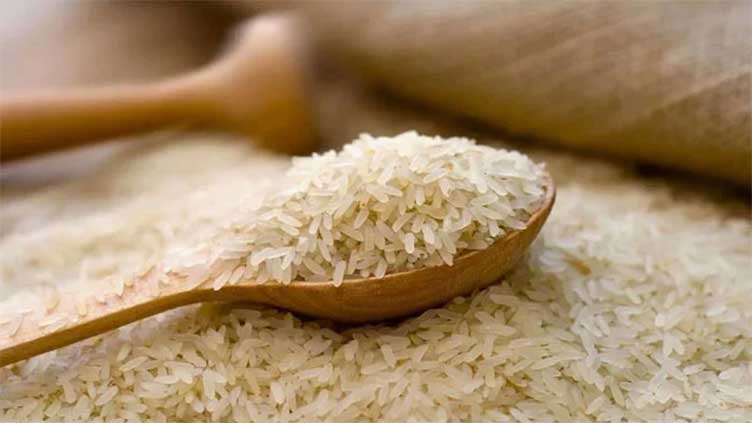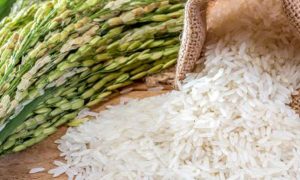Rice Starch Market Set to Grow to US$ 1,773 Mn by 2032 as Clean Label and Natural Thickening Agents Gain Traction

The global rice starch market is projected to grow from $1.125 billion in 2025 to $1.773 billion by 2032, reflecting a CAGR of 6.7%. Native rice starch is expected to hold a 60.3% market share in 2025, driven by its popularity in gluten-free formulations. The Asia Pacific region is anticipated to account for 42% of the market in 2025, owing to the rising demand for rice-based products.
The global rice starch market is witnessing remarkable growth as consumer preferences shift towards natural and clean-label ingredients. This starch, extracted from rice grains, has gained wide popularity for its neutral taste, hypoallergenic nature, and functional versatility. As of 2025, the rice starch market is projected to reach a valuation of US$ 1,125 million, with a strong forecast to rise at a CAGR of 6.7%, hitting approximately US$ 1,773 million by 2032.
The food and beverage industry stands as the largest end-user, thanks to rice starch’s excellent stabilizing and texturizing capabilities, especially in gluten-free and allergen-friendly formulations. Among market segments, native rice starch leads due to its minimal processing and suitability for health-conscious formulations. Asia Pacific, with a projected 42% share in 2025, continues to be the dominant region owing to rising demand for rice-based foods, increased urbanization, and consumer awareness. Meanwhile, North America, capturing 29.8% of the share in 2025, is expanding quickly due to its booming gluten-free segment and growing demand for organic ingredients.
Key Highlights from the Rice Starch Market Report
➤ Native rice starch is expected to command a 60.3% market share in 2025 due to its widespread application in gluten-free foods.
➤ The conventional segment is projected to lead with a 63.7% market share in 2025 owing to affordability and accessibility.
➤ The Asia Pacific region is anticipated to hold a 42% market share by 2025, driven by strong demand from food and cosmetic sectors.
➤ North America’s rice starch market is projected to grow at a CAGR of 8.2% from 2025 to 2032 due to rising demand for clean-label products.
➤ In October 2023, BENEO launched Remypure S52, a clean-label rice starch product aimed at gluten-free baked goods.
➤ Increasing gluten sensitivity and celiac disease prevalence is fostering demand for rice starch-based food alternatives.
Market Segmentation
Rice starch is segmented into native and modified types, with native rice starch dominating the landscape due to its minimal processing, sustainability, and wide application in natural food products. Native starch is especially preferred for gluten-free and allergen-friendly items, offering smoother textures and enhanced shelf stability. Modified rice starch, on the other hand, finds niche uses in industrial applications requiring altered viscosity and processing resistance.
By nature, the market is split into organic and conventional. While conventional rice starch holds a larger market share due to cost-effectiveness and easy availability, organic rice starch is rapidly gaining traction, especially in high-end personal care and food products, where health-conscious consumers seek sustainable and chemical-free ingredients.
In terms of end-use, the food and beverage sector is the largest consumer of rice starch. Applications include baked goods, sauces, and dairy alternatives. The pharmaceutical industry utilizes rice starch as a binder and disintegrant, while the cosmetic sector uses it for its soothing, non-irritating properties. Additionally, rice starch is used in animal feed, paper manufacturing, and biodegradable packaging materials.
Regional Insights
Asia Pacific leads the global rice starch market and is expected to maintain dominance throughout the forecast period. Countries like China, India, and Thailand are major producers and consumers of rice-based products. Rapid urbanization, population growth, and a shift toward health-oriented food choices are propelling demand.
North America is the fastest-growing region, driven by the rising popularity of gluten-free and clean-label products. Heightened awareness about celiac disease, paired with increased disposable income, has made rice starch a go-to ingredient in bakery and dairy alternatives.
Europe is witnessing steady growth with a rising demand for plant-based products. The European Food Safety Authority’s strict guidelines regarding food additives have encouraged the use of rice starch as a natural thickening and stabilizing agent.
Latin America, Middle East & Africa, and South Asia & Oceania show emerging potential, particularly as regional manufacturers adopt rice starch to replace synthetic additives and meet rising consumer expectations for transparency and sustainability.
Market Drivers
One of the strongest market drivers is the global push for clean-label and gluten-free products. Consumers are increasingly scrutinizing ingredient labels, favoring natural alternatives over chemically modified starches. Rice starch, with its hypoallergenic and non-GMO profile, fits well into this narrative.
The sustainability trend is also fueling demand. Rice starch is biodegradable, derived from renewable resources, and aligns with eco-conscious consumer values. Brands like Olam Rice and BENEO are focusing on ethical sourcing and reducing carbon footprints through partnerships and certifications under initiatives like the Sustainable Rice Platform.
The growth of the vegan and plant-based food movement is further boosting demand. Rice starch serves as an excellent plant-based thickener and texturizer in soups, sauces, dairy alternatives, and bakery products. With consumers looking for cruelty-free and allergen-free ingredients, rice starch is becoming indispensable in product formulations.
Market Restraints
Despite its many advantages, the market faces price volatility in raw materials. Rice production is highly susceptible to climate conditions, geopolitical tensions, and market demand, which can lead to fluctuating input costs. This affects production stability and profit margins for rice starch manufacturers.
Another challenge is the availability of cheaper alternatives like corn, potato, and tapioca starch. These substitutes are often more widely produced and understood by food processors, creating tough competition for rice starch, especially in cost-sensitive markets.
Supply chain interruptions, stemming from geopolitical conflicts or global pandemics, also pose risks. Such disruptions can delay production and affect the consistent availability of rice starch in global markets.
Market Opportunities
Innovations in food processing technologies are unlocking new potentials for rice starch. Enhanced extraction methods now preserve the starch’s natural characteristics while improving water-binding capacity and thermal stability. This opens doors for application in new product categories including dairy substitutes and allergen-friendly desserts.
There is a growing opportunity in the cosmetics and personal care industry, where rice starch is used in talc-free powders, creams, and lotions. Its soothing properties, fine texture, and oil absorption capacity make it ideal for sensitive skin formulations.
The pharmaceutical industry is another lucrative avenue. As an excipient, rice starch provides consistency and stability in tablet formulations. With rising demand for natural medicinal ingredients, rice starch is becoming a preferred alternative to synthetic binders.
To read more about Rice News continue reading Agriinsite.com
Source : Open PR















